So, I hinted last week about my Mozilla presentation. Basically, I talked about Mozilla's history, how they innovate, and where I think they may go next. I illustrated how Mozilla innovated by involving the class in helping me create add-ons for my space ship just like developers create add-ons to enhance the capabilities of the Firefox browser.
Check out the pictures!
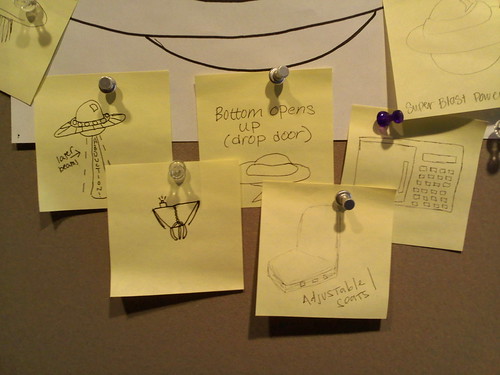
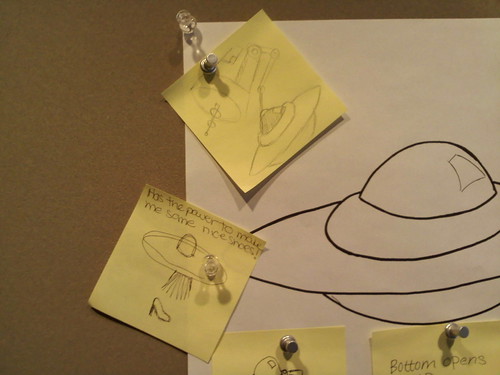
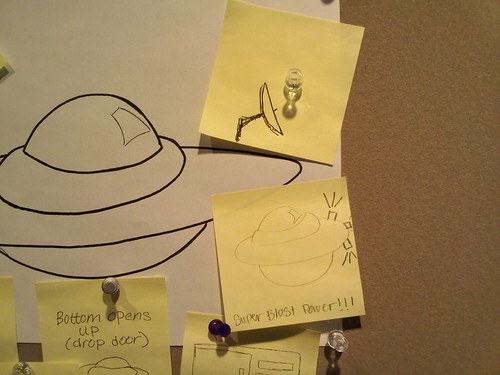
To continue from my hints last week: Radio Frequency Identification (RFID) and Near Field Communication (NFC) technologies have been around for a while.
Visa uses both technologies in it's new Visa Wave technology that it is working to implement in it's cards. Nokia has created a phone called the 6121 Classic that is RFID and NFC capable, but both Visa and Nokia are going in the wrong direction. RFID and NFC are the right direction, but not with credit cards and personal information. People will not be quick to adopt carrying a cell phone loaded with bank and personal information.
However, people would be quick to adopt a phone that could interact with their environment and link them instantly to the best information about products and events around them. 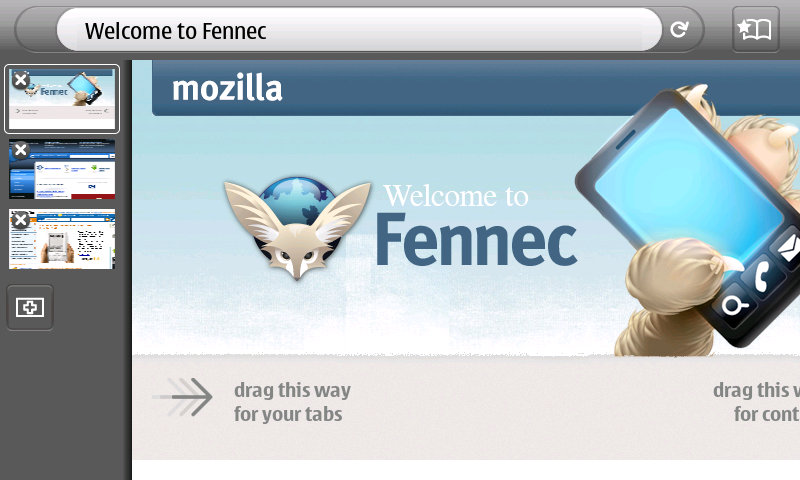
This is where Mozilla comes in with Fennec. Fennec is Mozilla's prototype mobile browser that could one day be built with the purpose of ubiquitous computing using a RFID and NFC Capable phone.
If it were on an iPhone, it might look something like this: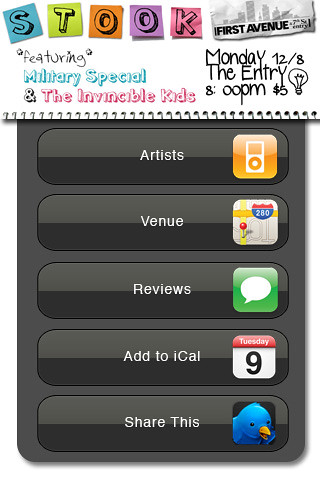
You would wave you phone in front of a concert or event poster, the RFID tag on the poster would be a unique code or number that would identify with a server that could instantly feed your phone with information intended by the creator of the tag such as adding the event to your iCal, Tweeting to your friends about it, a map, or link to buy albums on the iTunes store.
If Mozilla can jump on an opportunity like this before Apple does by using building Fennec to intuitively incorporate these capabilities, they could be onto a whole new business model of royalties for each swipe and transfer of information from an RFID tag.
Think! The possibilities are endless!
For more information, any posts tagged "mozilla" or "mozconcept" will contain more process information on this presentation and idea.
Mozilla Presentation
More Mozilla Process
In process towards my end presentation for my Progress & Innovation class I've been sketching some more ideas about Mozilla.
This first one is all about the current browser war and their progress towards the imminent "Web 3.0" like the world of Aurora and other next-gen internet internet ideas.
Internet Exploder is a bit behind and is due for some catch-up work. I doubt they'll be the next one to step up the bar. Safari is right up there and current, but browsers like Firefox, Flock, and Cruz have stepped it up in terms add-ons, features, and specialization. Chrome seems to have the best grip on the future with it's application integration and movement away from the static OS desktop. In addition, Apple has started to move into the new world of mobile phone applications with its App Store, which has opened up a lot of new opportunities for social and online marketing, but Google is not far behind with Android. Hopefully someone will open up a new paradigm of interconnected PC and mobile browsing and communication.
Here I've got some ideas about how pieces of this project will be fitting into my final presentation and how I can incorporate visual and physical elements.
This is what I'm thinking so far:
First will be a visual explanation of Mozilla's history and some basics on their innovation structure including the visualization that I posted a few weeks ago.
Second will be an activity where I present a mock project or idea under an Open Source Creative Commons License. It will be pretty bare bones, like a spaceship with no gadgets or a monster that has no eyes, tentacles, or scary features. Next, I will create a scenario for the monster or space ship. Some sort of adventure that will include some sort of obstacle that will require the monster or spaceship to have additional features to completely. Then, I will ask the class to make a quick drawing of some things that they would add to the monster or spaceship to improve it's performance in it's task. Finally, the additions that the class draws up will be added to the monster or spaceship and we can talk about how everyone contributed to the development of the monster or spaceship just like a Mozilla development community would contribute to Firefox or other Mozilla Labs projects.
In the last segment of my presentation, I will segue from the development of Mozilla Labs projects, into my ideas on any new innovations that Mozilla may introduce in the future. I have more to think on this, but I would like to come up with some sort of prototype or demo of my idea. 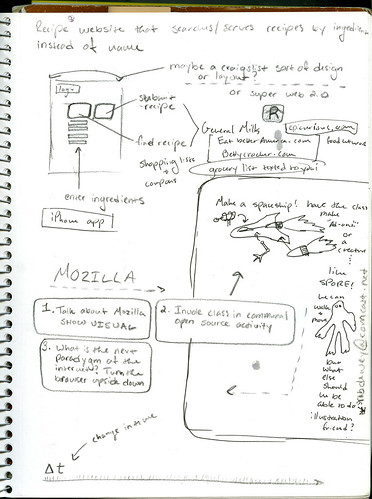
To summarize for class. So far I've included all of these element that we have studied in previous weeks:
Ideation
Sketching
Mapping
Storytelling
Group Activity
Play
Prototyping
So there you have it! More to come this week!
Visual Map of Mozilla Open Innovation Model
If you remember the sketch that I posted a week or two ago, here is my first draft. I've shown it to a friend or two and emailed it to my professor as well, but just important, is what it means to you!
So, please! Tell me what you think. What I really need to know is what it means to you and if what I am trying to get across is clearly communicated. Thanks for looking!
Here is a link to download the full .pdf if you prefer to view it in High Res.
http://j.homes.mcad.edu/~jszymanski/images/Mozilla_VisualCommunityMap.pdf
Mozilla Project Beginning
Right now in my Innovation & Progress class we are doing research on an innovative company. My company is Mozilla. The eventually goal will be to give a brief history of Mozilla, descirbe their process of innovation, and then predict how they might go about innovating in the future.
Below is a sketch of an idea I have for how to illustrate the distribution and workings of Mozillas groups, teams, and how they go about bringing in outside ideas through their Mozilla Public License.

What is going on here you ask? I know, it’s kind of difficult to see, but just generally…
The goal of this visualization will be to demonstrate the connections between Mozilla and it’s all of it’s contributing communities.
—> On the left you have the start of a project, idea, or general goal.
—> On the far right is the path of the purpose of the project.
—> In the middle, you have the current project completion. Each circle represents a person contributing to the project.
Each person comes to the project from different angle and background. Everyone has something different to offer. They move into the project and move out during daily cycles taking in new experiences and inputs that they use to continue to contribute to the project. Many of these inputs that are gathered come from interactions from other people outside of Mozilla.
These are other companies, forums, and communities that interact with Mozilla and share in their open innovation model.